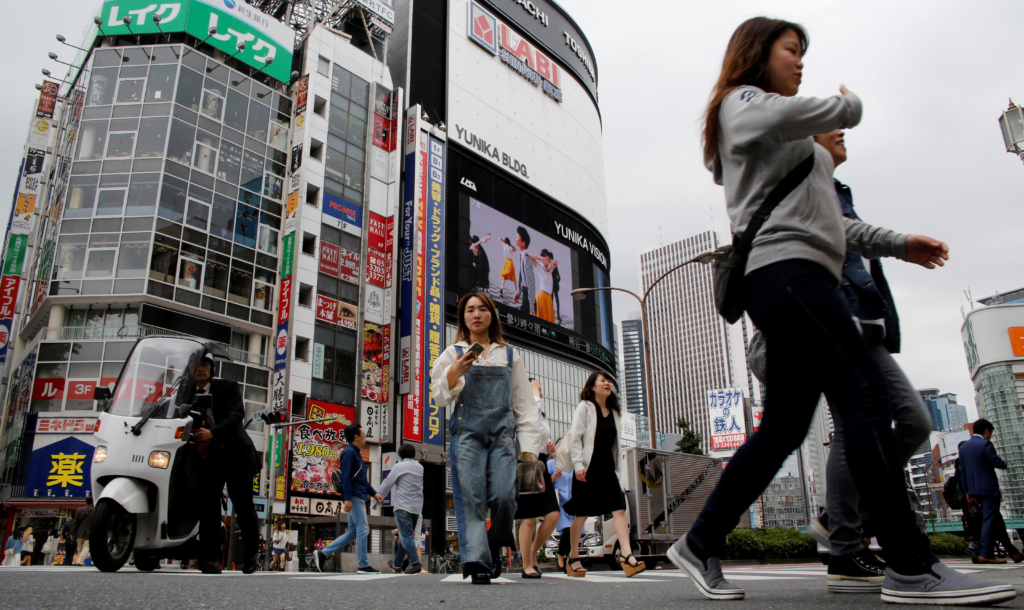Japan Two consecutive quarters of contraction are typically considered the definition of a technical recession.

Japan unexpectedly slipped into a recession at the end of last year, losing its title as the world’s third-biggest economy to Germany and raising doubts about when the central bank would begin to exit its decade-long ultra-loose monetary policy.
Some analysts are warning of another contraction in the current quarter as weak demand in China, sluggish consumption and production halts at a unit of Toyota Motor Corp, opens new tab all point to a challenging path to an economic recovery.
Also Read: Democrat Suozzi wins US House election in New York, eroding Republican majority
“What’s particularly striking is the sluggishness in consumption and capital expenditure that are key pillars of domestic demand,” said Yoshiki Shinke, senior executive economist at Dai-ichi Life Research Institute.
“The economy will continue to lack momentum for the time being with no key drivers of growth.”
Japan’s gross domestic product (GDP) fell an annualised 0.4% in the October-December period after a 3.3% slump in the previous quarter, government data showed on Thursday, confounding market forecasts for a 1.4% increase.
Two consecutive quarters of contraction are typically considered the definition of a technical recession.
While many analysts still expect the Bank of Japan to phase out its massive monetary stimulus this year, the weak data may cast doubt on its forecast that rising wages will underpin consumption and keep inflation durably around its 2% target.
“Two consecutive declines in GDP and three consecutive declines in domestic demand are bad news, even if revisions may change the final numbers at the margin,” said Stephan Angrick, senior economist at Moody’s Analytics.

“This makes it harder for the central bank to justify a rate hike, let alone a series of hikes.”
Economy minister Yoshitaka Shindo stressed the need to achieve solid wage growth to underpin consumption, which he described as “lacking momentum” due to rising prices.
“Our understanding is that the BOJ looks comprehensively at various data, including consumption, and risks to the economy in guiding monetary policy,” he told a news conference after the data’s release, when asked about the impact on BOJ policy.
The yen was steady following the release of the data and last stood at 150.22 per dollar, pinned near a three-month low hit earlier in the week.
The Nikkei, opens new tab rose 0.8%, reversing some of its losses made from the previous session, possibly on expectations the BOJ may continue with its massive easing programme for longer than expected.
On a quarterly basis, GDP slid 0.1% against median forecasts of a 0.3% gain, and compared with a 0.8% contraction in the previous quarter.
Private consumption, which makes up more than half of economic activity, fell 0.2%, weaker than a market forecast for a 0.1% gain, as rising living costs and warm weather discouraged households from dining out and buying winter clothes.
Capital expenditure, another key private-sector growth engine, fell 0.1%, compared with forecasts of a 0.3% gain, as supply constraints delayed construction projects.
External demand, or exports minus imports, contributed 0.2 percentage point to GDP as exports rose 2.6% from the previous quarter, the data showed.
The BOJ has been laying the groundwork to end negative rates by April and overhaul other parts of its ultra-loose monetary framework, but is likely to go slow on any subsequent policy tightening amid lingering risks, sources have told Reuters.
While BOJ officials have not offered clues on when exactly they could end negative rates, many market players expect such an action to happen either in March or April. A Reuters poll taken in January showed April as the top choice among economists for the negative rate policy to be abandoned.
Some analysts say Japan’s tight labour market and robust corporate spending plans are keeping alive the chance of an early exit from ultra-loose policy.
“While the second consecutive contraction in GDP in Q4 would suggest that Japan’s economy is now in recession, business surveys and the labour market tell a different story.
Either way, growth is set to remain sluggish this year as the household savings rate has turned negative,” said Marcel Thieliant, head of Asia-Pacific at Capital Economics.
“The (BOJ) has been arguing that private consumption has ‘continued to increase moderately’ and we suspect that it will continue to strike an optimistic tone at its upcoming meeting in March,” Thieliant said, sticking to his proje
Also Read: Joe Biden calls Benjamin Netanyahu ‘as***ole’, slams Gaza operations: Report
This Article Was Originally Published On DNAIndia.com!
















Reader Interactions